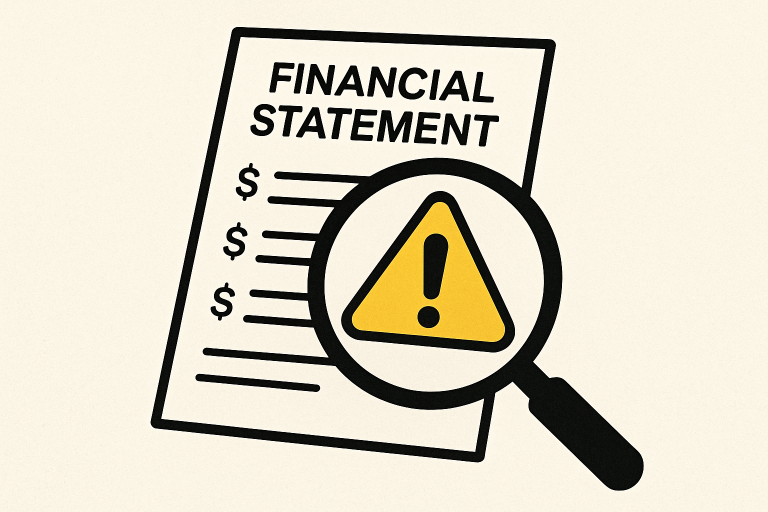Understanding Financial Statement Fraud
Financial statement fraud is a deceptive practice that undermines the trust between companies and their stakeholders. It typically involves the intentional distortion of financial information, such as exaggerating revenues or understating liabilities, to make a company appear more financially stable and profitable than it truly is. Companies may resort to these tactics to attract investors or to avoid negative publicity.
The consequences of financial statement fraud are far-reaching, with repercussions that extend to shareholders, potential investors, and the broader economy. Losses can be devastating, leaving investors with little recourse after the deception is uncovered. For those facing or suspecting fraud in investments, seeking professional guidance from a CA securities fraud lawyer can provide clarification and potential legal avenues.
At its core, financial statement fraud erodes the very foundation of the investing landscape—trust. When companies manipulate their earnings, it becomes difficult for honest businesses to compete, and investors are left to navigate a market where the numbers may not reflect reality.
Common Red Flags of Financial Statement Fraud
Detecting fraud early often hinges on recognizing key warning signs. Some of these red flags may appear subtle at first glance, but tend to become more pronounced upon closer examination. Investors should be especially wary of the following:
- Inconsistent Revenue Growth: If a company reports steady or exceptional revenue growth despite sector-wide downturns, this could be a sign of number fabrication or premature revenue recognition.
- Discrepancies Between Revenue and Cash Flow: Healthy revenue increases should be matched by comparable growth in operating cash flow. When this isn’t the case, it may indicate that sales aren’t being converted into real cash, a classic symptom of manipulated accounting.
- Unusual Asset Valuations: Significant and unexplained spikes or drops in asset or liability accounts could suggest misclassification or creative accounting methods.
- Frequent Auditor Changes: If a company regularly changes audit firms or significantly delays reporting, it may be attempting to hide or cover up discrepancies in its financial statements.
Investors are well served by maintaining a healthy skepticism and thoroughly investigating such signals before committing capital. Regularly monitoring official statements from the SEC on financial statement fraud can also aid in awareness of current fraud schemes and emerging threats.
Techniques for Detecting Financial Statement Fraud
Armed with fundamental knowledge and skepticism, investors can utilize several analytical techniques and models to detect irregularities:
- Ratio Analysis: Examining trends in key ratios over time—such as price-to-earnings, current ratio, or debt-to-equity—can highlight unusual fluctuations that warrant further investigation.
- Vertical and Horizontal Analysis: Vertical analysis examines each line item as a percentage of a base figure, such as total revenue, whereas horizontal analysis compares figures across different periods. Both are useful for catching outlier shifts in numbers.
- Beneish M-Score Model: Recognized for its effectiveness in detecting earnings manipulation, this model utilizes financial metrics to assign a score that indicates the likelihood of fraudulent activity.
No single method can guarantee detection, but a combination of these approaches dramatically increases the chances of unmasking potential fraud.
The Role of Artificial Intelligence in Fraud Detection
Artificial intelligence has played a pivotal role in transforming traditional fraud detection. Machine learning algorithms and deep learning models can sift through enormous troves of accounting data, identifying patterns and relationships that may go unnoticed by the human eye. These systems are continually trained on new data, allowing them to adapt and become even more effective over time.
AI’s ability to detect minute anomalies—such as changes in transaction frequency or unseen correlations between accounts—makes it an indispensable tool for regulatory agencies, audit firms, and investors alike. Many financial institutions now rely on these technologies to automate the identification of suspect transactions and support internal audit teams with real-time alerts.
Case Study: The Madoff Investment Scandal
The infamous Madoff investment scandal remains one of the most illustrative examples of the devastation fraud can cause. Bernie Madoff, a once-respected financial advisor, orchestrated a massive Ponzi scheme that misled thousands by producing fake account statements and promising consistent returns. Even sophisticated investors and institutions fell prey to the scheme, underscoring the importance of skepticism and scrutiny.
The aftermath sent shockwaves through the investment community, leading to stricter oversight and increased investor education. It highlighted the importance of not accepting financial reports at face value and conducting comprehensive due diligence before investing.
Preventive Measures for Investors
Investing in today’s financial markets requires not just acumen but vigilance. Proactive steps for mitigating financial statement fraud risks include:
- Conduct Thorough Due Diligence: Go beyond surface-level numbers to research a company’s financial history, competitive position, and key personnel backgrounds.
- Seek Independent Audits: Favor companies whose books are examined by reputable, independent third-party auditing firms rather than internal teams.
- Stay Informed: Monitor regulatory updates and industry developments to stay aware of emerging fraud tactics and changes in reporting standards.
These precautions may not fully eliminate the risk, but can sharply reduce the likelihood of being caught by fraudulent schemes.
Final Thoughts
Financial statement fraud continues to threaten the trust, stability, and efficacy of global markets. By understanding the common indicators of fraud, leveraging a multi-method approach to analysis, embracing advanced technology, and maintaining rigorous due diligence, investors can position themselves to detect fraud more effectively and avoid deception. Informed, cautious investing is key to navigating today’s complex financial landscape.
